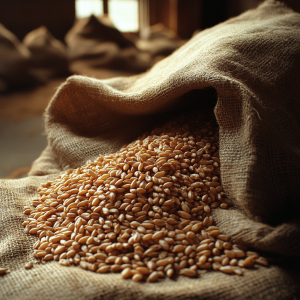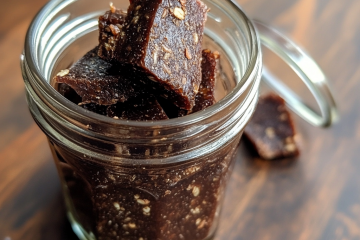
bare necessities of food storage
Today I wanted to give you an obtainable win in your food preparedness efforts by breaking down for you the absolute bare necessities that you COULD live off of for a year if you had to.
The Bare Necessities: Your Year-Long Food Storage Starter Pack
When it comes to preparing for the unexpected, food storage often feels like an overwhelming puzzle. Today, we’re breaking down the absolute bare essentials needed to keep an average adult functioning at 2,300 calories per day for an entire year. But hold onto your measuring cups, because there’s a plot twist: your individual needs might vary significantly. Children typically need about 1,000 fewer calories per day (so plan accordingly), while that hardworking adult male in your life might need to add another 1,000 calories to the daily count. This means you’ll need to adjust these storage numbers up or down by roughly 43% for these family members.
Let’s dive into the basic blueprint:
300 pounds of wheat (or other grains),
100 pounds of non-fat powdered milk,
100 pounds of sugar or honey,
5 pounds of salt, and
14 gallons of water.
Now, before you start marking off space in your storage room, let’s talk about that water figure. Those 14 gallons? That’s just your emergency starter pack. For a real year’s supply, you’re looking at a minimum of 365 gallons per person for drinking and basic hygiene alone. Add in cleaning, cooking, and other needs, and you’ll want to bump those numbers up even higher.
Here’s something they don’t tell you on the fancy preparedness charts: those 300 pounds of wheat aren’t going to magically turn themselves into bread. Unless you’re planning to develop superhuman wheat-nibbling abilities, you’ll need to master the art of sourdough baking. Why sourdough? Because in a long-term situation, commercial yeast might be harder to find than a parking spot at the grocery store during a snowstorm warning. Sourdough isn’t just a trendy bread-making method; it’s a sustainable way to create digestible, nutritious bread without relying on store-bought yeast. Plus, it adds beneficial bacteria to your diet and gives you a productive hobby when Netflix finally runs out of shows to recommend.
But wait, there’s more to wheat than just bread! Let’s talk about sprouting – your secret weapon for turning those wheat berries into nutritional

300 pounds of wheat/grain per person/adult, per year
powerhouses. Sprouting wheat is like giving your grains a superhero cape. When you sprout wheat, you’re essentially waking up those dormant seeds, triggering them to release additional vitamins and minerals while reducing phytic acid (that pesky compound that makes minerals harder to absorb). Plus, sprouted wheat is easier to digest, contains higher levels of vitamin C, B vitamins, and folate, and can be eaten raw in salads, added to soups, or dried and ground into a super-nutritious flour. All you need is some wheat, water, and a jar with a sprouting lid – though in a pinch, a piece of cloth secured with a rubber band works too. Think of sprouting as your insurance policy against scurvy and other nutritional deficiencies that might try to crash your survival party.
While these basics will keep you alive, they’re about as exciting as watching paint dry in a windowless room. Consider expanding your stores with cooking oils, legumes for protein variety, and basic spices – because eating plain wheat bread for 365 days straight is a special kind of culinary torture that nobody deserves. Adding vitamin supplements isn’t a bad idea either, unless you’re particularly fond of discovering what 18th-century sailing diseases feel like.

Man eating salt
Remember, this list is just your starting point – the “Survival 101” of food storage, if you will. Think of it as learning to walk before you run, or in this case, learning to store wheat before you become that neighbor with a basement full of freeze-dried gourmet meals and enough powdered eggs to make an army of chickens jealous. And speaking of starting points, your sourdough starter (which you’ll affectionately name and care for like a pet) won’t create itself. Time to roll up those sleeves and get that flour flying – your year’s supply of wheat isn’t going to turn itself into bread!
Just remember: storing the food is only half the battle. Understanding how to use these basic ingredients effectively – whether through baking, sprouting, or other preparation methods – is what turns your storage from a pile of ingredients into actual survival sustenance. And hey, if nothing else, you’ll come out of this with some impressive sourdough skills and sprouting knowledge to show off at the next neighborhood potluck – assuming we’re still doing those in the apocalypse.


